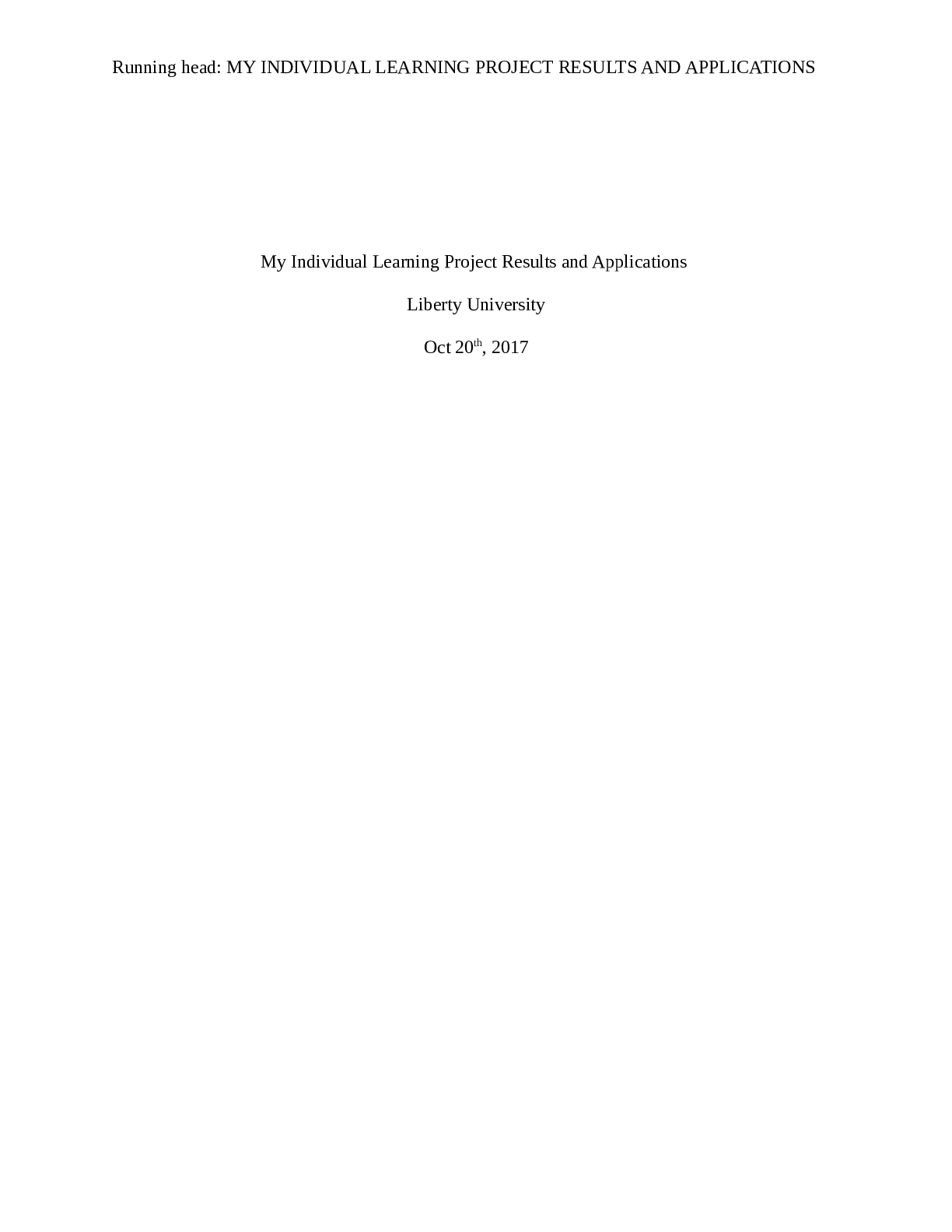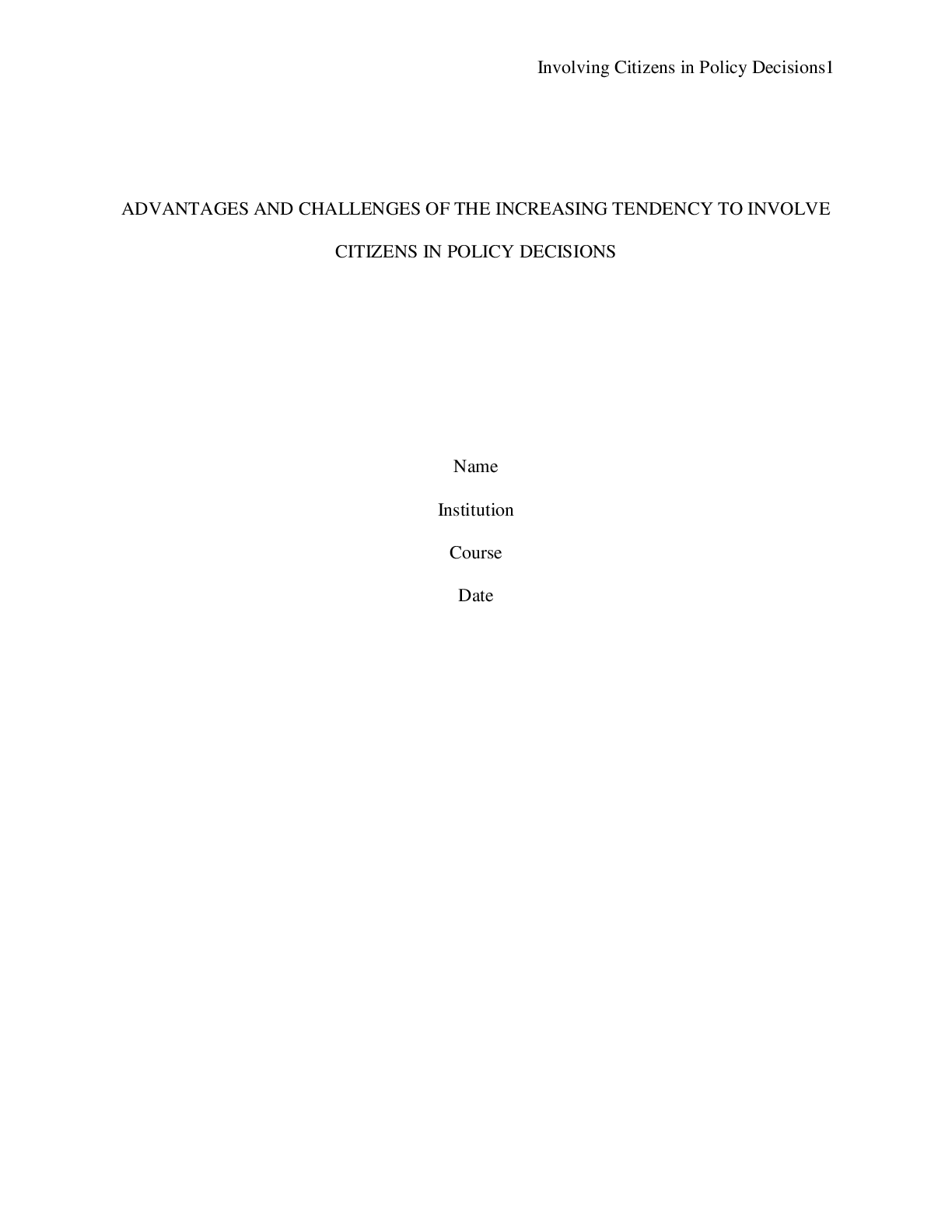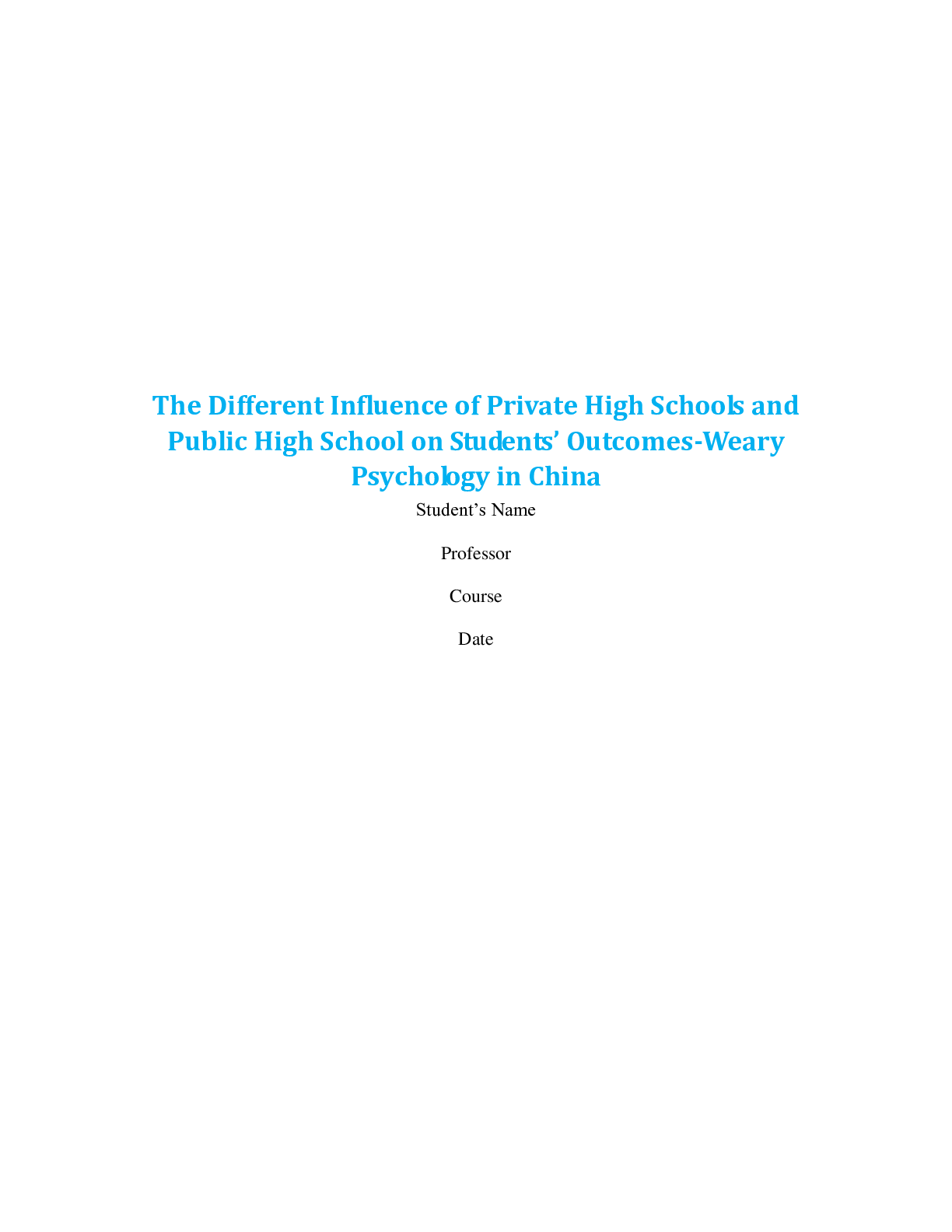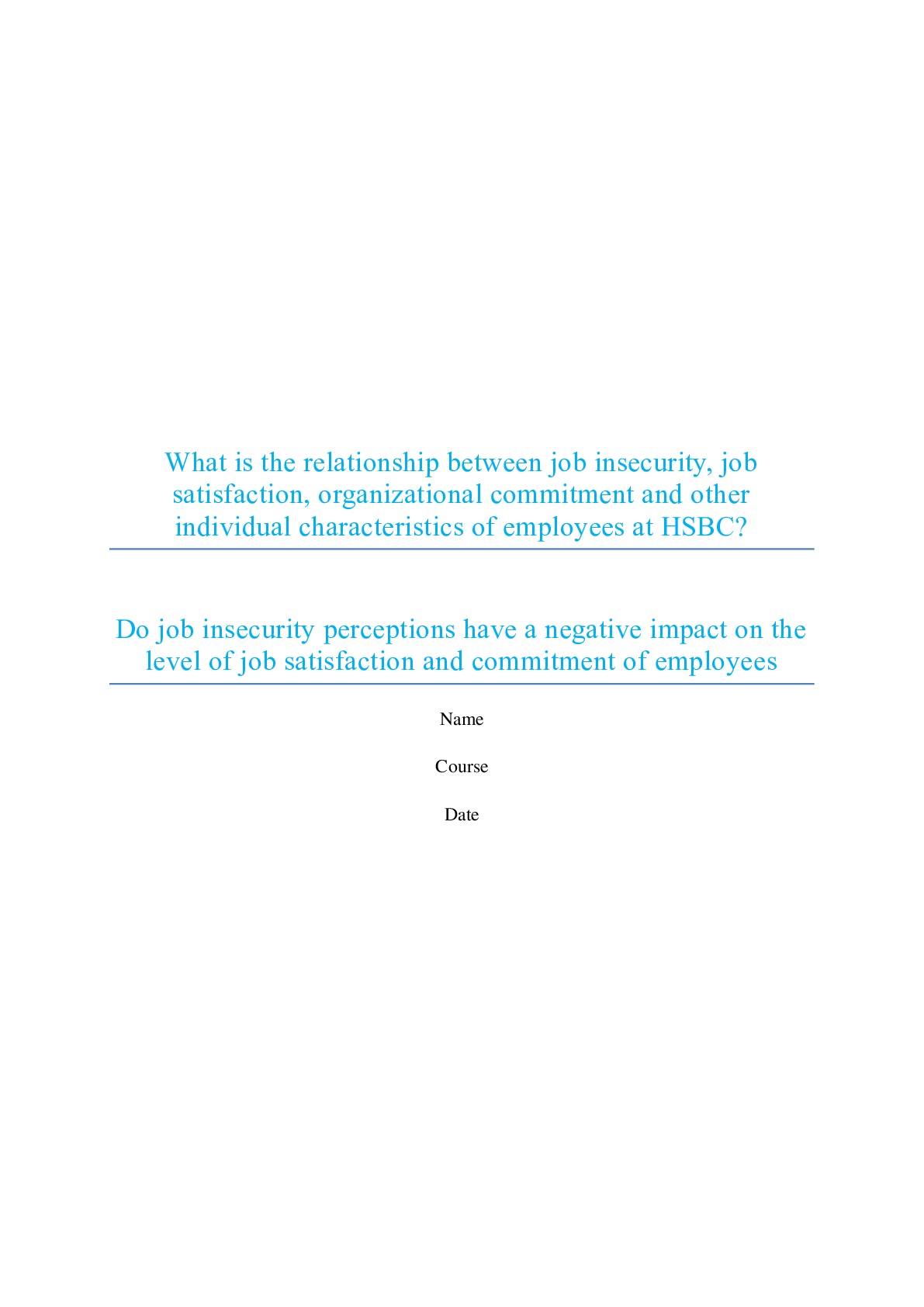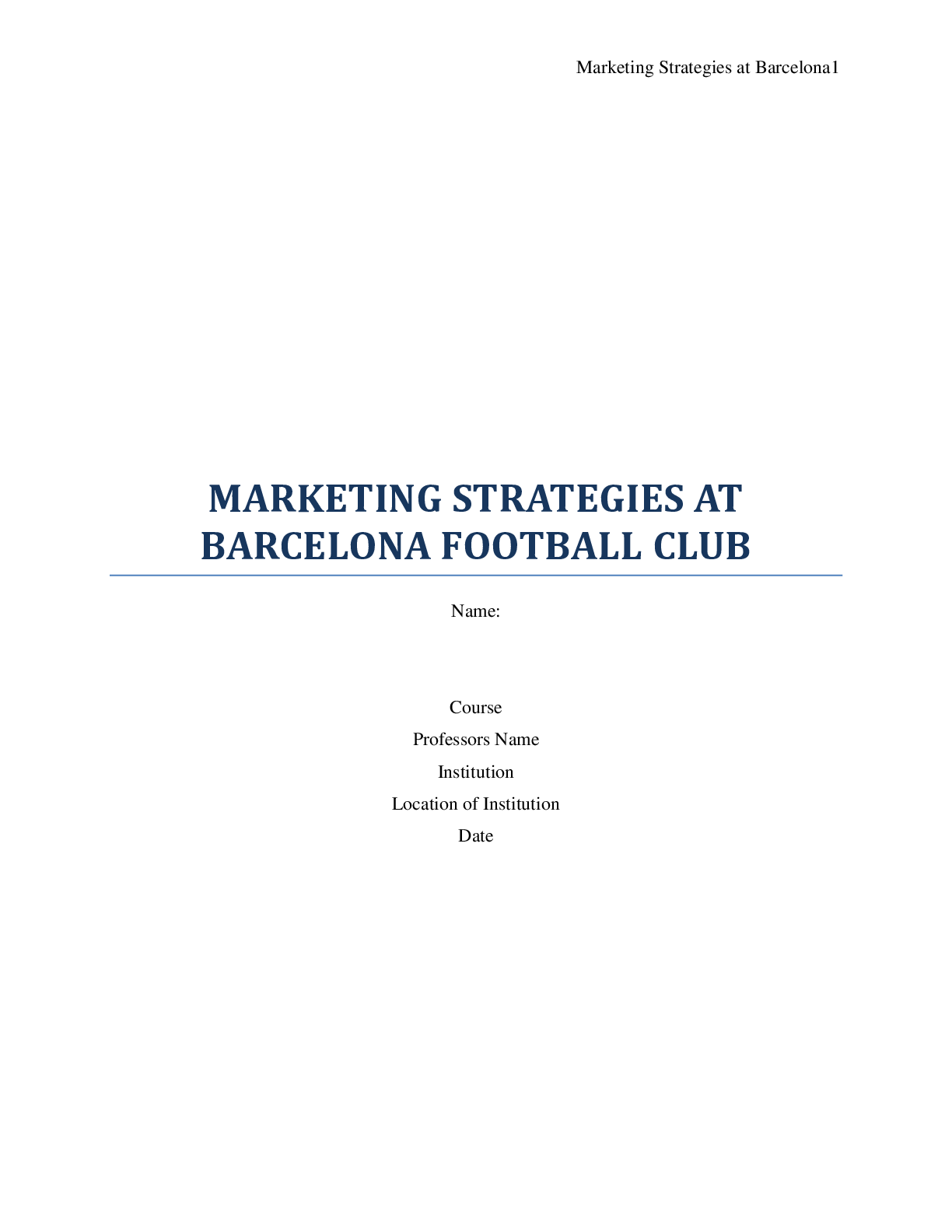History > Research Paper > Precis EMBATTLED FREEDOM (All)
Precis EMBATTLED FREEDOM
Document Content and Description Below
Topic: Precis Type of paper: Book/movie review Discipline: History : History Academic level: Master's Format or citation style: APA (edition "APA 6") THIS IS AN EXAMPLE OF HOW TO D... O A PRECIS The book is Embatled Freedom: Gabriel Burdett in Slavery. I don't have a copy of the texr Student X Precis ExampleGutierrez, Ramon A. When Jesus Came, the Corn Mothers Went Away: Marriage, Sexuality and Power in New Mexico, 1500-1846 (Stanford: Stanford University Press, 1991).Author’s Background: Ph.D., History - University of Wisconsin, Madison, 1980, under the direction of Peter Smith. Topic: Marriage, family and sexuality in New Mexico. Currently at UCSD, ethnic studies department. Also teaches for history department. Affiliated with the program for the study of religion at UCSD. CV includes awards, fellowships, other positions too numerous to resist.Community, Patriarchy and Individualism: A Cultural History of the Chicano Movement, 1965-1990 (book contract with Stanford University Press). Crucifixion, Slavery and Death: Genizaro Politics and Identity in New Mexico, 1700-1990. (in progress)Beyond Black and White: Teaching the History of Race in the Twenty-first Century, special teaching book commissioned by the American Historical Association (under review).Too many articles and book chapters to list, most concerning honor, marriage, sexuality, church and state issues in the borderlands.Historical Problem: Author wishes to view colonial borderlands history through several (overlapping) lenses: marriage, sexuality, honor, gender, and cultural change. How do these factors change and move history over long range? How do they influence relationships and power? Uses marriage as a window into “intimate social relations” examines Spanish conquest of America and its impact on the pueblo People.Thesis: Every society is a system of inequality- one only has to find basis of inequality, determining factors. In New Mexico, marriage structures inequality among Pueblo, Spanish alike. Marriage provides a portrait of status and class- “Do we marry with them?” Among Pueblo, reciprocity also structures inequality. Sexuality and the sacred are also strongly linked-even for the Franciscans. Understanding sexuality and the structuring of this sexuality, marriage, is central for our understanding of the sacred for the Pueblo Indians and even for the Spanish of New Mexico.Sources: Lots of traditional social history documents. Marriage and baptism records, Inquisition records, Franciscan memoirs, letters, governmental records. Also uses memoirs of expeditions, especially Coronado. Finally, Gutierrez uses more traditionally anthropological sources-the Handbook of Native American Indians (based almost exclusively on ethnography and fieldwork), myth, folktales, dance and other rituals.Genre: Gutierrez says it’s a straight social history (p. xvii), but it is also strongly cultural and interdisciplinary- his primary contention of structured inequality is based on anthropological works. Significant findings: Linking of the sexual and the sacred is cross-cultural; just more overt among the Pueblo than the Spaniards (ex: the Franciscan idea of mystical marriage with Christ and the genital mutilation of the Franciscans) Also- gender structures even the most masculine, feminine, and asexual aspects of life; again, the Franciscans were seen (by they themselves) as the bride to the bridegroom, Christ.Ideology: postmodern- Gutierrez breaks down the institution of marriage and transforms it into a social process. Other works have treated marriage, but often use it as demographic data or in comparisons between social classes- who can afford to marry? Gutierrez’s notion of structured inequality in marriage is a very different way of viewing the institution.Historical contribution: One of the first really big books on gender and sexuality-especially for Native Americans, borderlands areas; the work helped to open up the field. It seems that scholars either love or hate this book- really polarized about it. His notion of structured inequality in marriage gave rise to the big debate between he and Patricia Seed over the concept of marriage for love, how prevalent it was in colonial Latin America, and what kind of people were able to marry for love.Strength of the work: Making the periphery- borderlands areas, areas that are not commonly studied- central. Inclusion of myth, ritual as evidence. His examination of the sexuality of the Franciscan religious teachings for the indigenous missions and the sexual nature of how Franciscans view Christianity in conjunction with Pueblo sexuality is particularly effective and well done, making a strong case for the linking of the sexual and the sacred in every culture in the New Mexico area (and I think that Gutierrez might argue for just about every culture in the world).Weaknesses of the work: Gutierrez was criticized for just about every word he wrote in this book- everyone had a problem with something or other. Some of the major things are: 1) the inclusion of myth and ritual as evidence (even though I feel it is a strength). One of the strongest arguments against this was in Hewittt’s review. She observes that when Gutierrez goes too far with taking folk beliefs at face value or mixes belief and everyday life too easily, it always concerns female sexuality. Her example is the idea that mestizo offspring of Indian women are called coyotes because “they like to do it like dogs.” 2)the work is very broadly conceived and driven largely by theory. Many scholars seem to be very uncomfortable with this. For instance, several people blasted his linking of sex and feeding as inclusive behavior for the Pueblo. 3) lots of factual errors 4)author does not consult any other works on gender for Latin America- Gruzinski, Lavrin, Guy, Silverblatt, etc. Also does not consult many of the prominent Pueblo historians.The biggest criticism: Gutierrez did not consult any living Pueblos about their history.Why did he write it? The work grew out of his doctoral dissertation, which focused on marriage patterns and family for the Spanish population of New Mexico. After this, he wrote several works on the Pueblo- it makes sense to combine them. Also, I think that his interest in sexuality made the Pueblo a very interesting and challenging topic.Significant findings: Linking of the sexual and the sacred is cross-cultural; just more overt among the Pueblo than the Spaniards (ex: the Franciscan idea of mystical marriage with Christ and the genital mutilation of the Franciscans) Also- gender structures even the most masculine, feminine, and asexual aspects of life; again, the Franciscans were seen (by they themselves) as the bride to the bridegroom, Christ.Ideology: postmodern- Gutierrez breaks down the institution of marriage and transforms it into a social process. Other works have treated marriage, but often use it as demographic data or in comparisons between social classes- who can afford to marry? Gutierrez’s notion of structured inequality in marriage is a very different way of viewing the institution.Historical contribution: One of the first really big books on gender and sexuality-especially for Native Americans, borderlands areas; the work helped to open up the field. It seems that scholars either love or hate this book- really polarized about it. His notion of structured inequality in marriage gave rise to the big debate between he and Patricia Seed over the concept of marriage for love, how prevalent it was in colonial Latin America, and what kind of people were able to marry for love.Strength of the work: Making the periphery- borderlands areas, areas that are not commonly studied- central. Inclusion of myth, ritual as evidence. His examination of the sexuality of the Franciscan religious teachings for the indigenous missions and the sexual nature of how Franciscans view Christianity in conjunction with Pueblo sexuality is particularly effective and well done, making a strong case for the linking of the sexual and the sacred in every culture in the New Mexico area (and I think that Gutierrez might argue for just about every culture in the world).Weaknesses of the work: Gutierrez was criticized for just about every word he wrote in this book- everyone had a problem with something or other. Some of the major things are: 1) the inclusion of myth and ritual as evidence (even though I feel it is a strength). One of the strongest arguments against this was in Hewittt’s review. She observes that when Gutierrez goes too far with taking folk beliefs at face value or mixes belief and everyday life too easily, it always concerns female sexuality. Her example is the idea that mestizo offspring of Indian women are called coyotes because “they like to do it like dogs.” 2)the work is very broadly conceived and driven largely by theory. Many scholars seem to be very uncomfortable with this. For instance, several people blasted his linking of sex and feeding as inclusive behavior for the Pueblo. 3) lots of factual errors 4)author does not consult any other works on gender for Latin America- Gruzinski, Lavrin, Guy, Silverblatt, etc. Also does not consult many of the prominent Pueblo historians.The biggest criticism: Gutierrez did not consult any living Pueblos about their history.Why did he write it? The work grew out of his doctoral dissertation, which focused on marriage patterns and family for the Spanish population of New Mexico. After this, he wrote several works on the Pueblo- it makes sense to combine them. Also, I think that his interest in sexuality made the Pueblo a very interesting and challenging topic. [Show More]
Last updated: 1 year ago
Preview 1 out of 5 pages
Instant download

Buy this document to get the full access instantly
Instant Download Access after purchase
Add to cartInstant download
Reviews( 0 )
Document information
Connected school, study & course
About the document
Uploaded On
Mar 29, 2021
Number of pages
5
Written in
Additional information
This document has been written for:
Uploaded
Mar 29, 2021
Downloads
0
Views
50





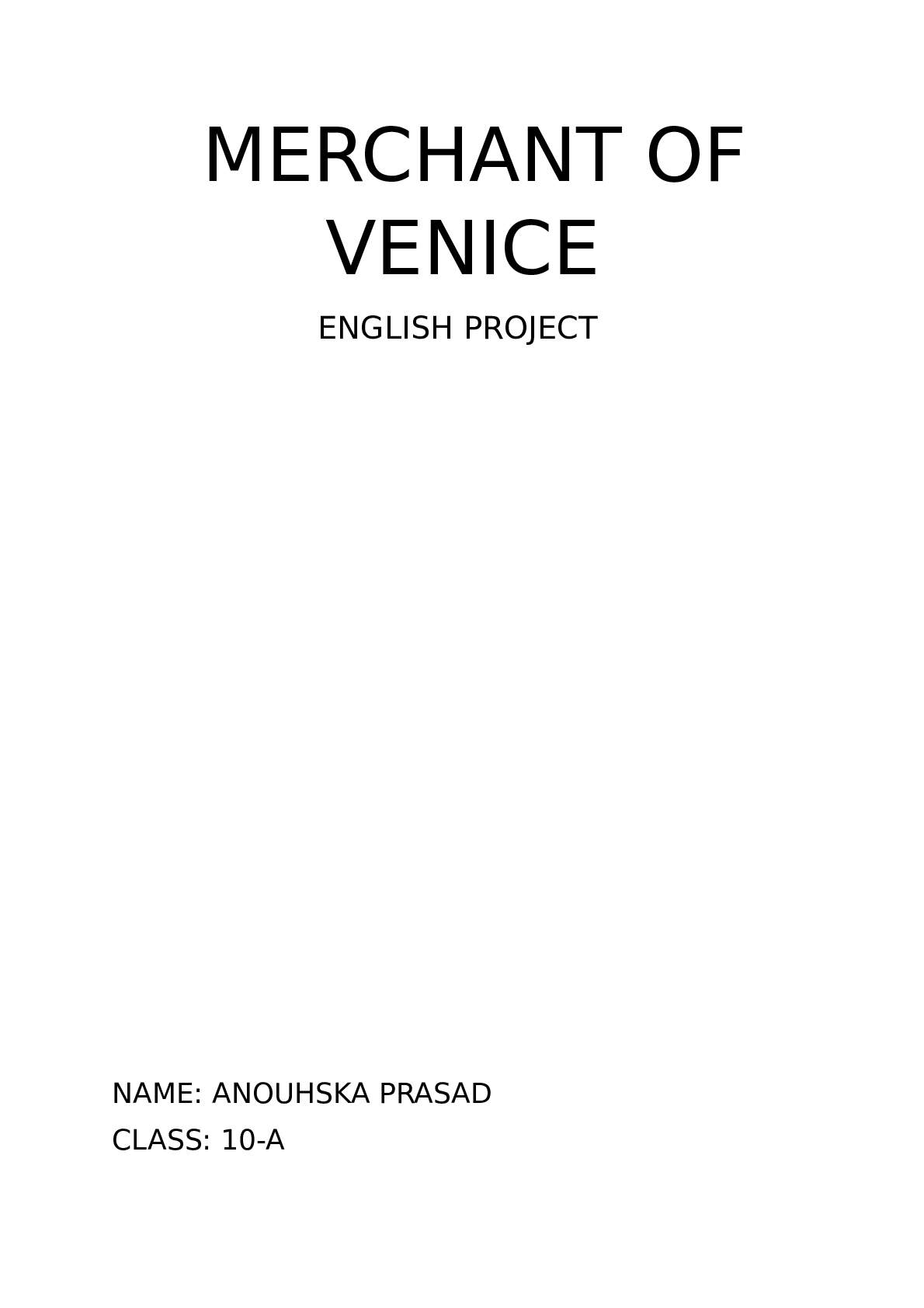




.png)

